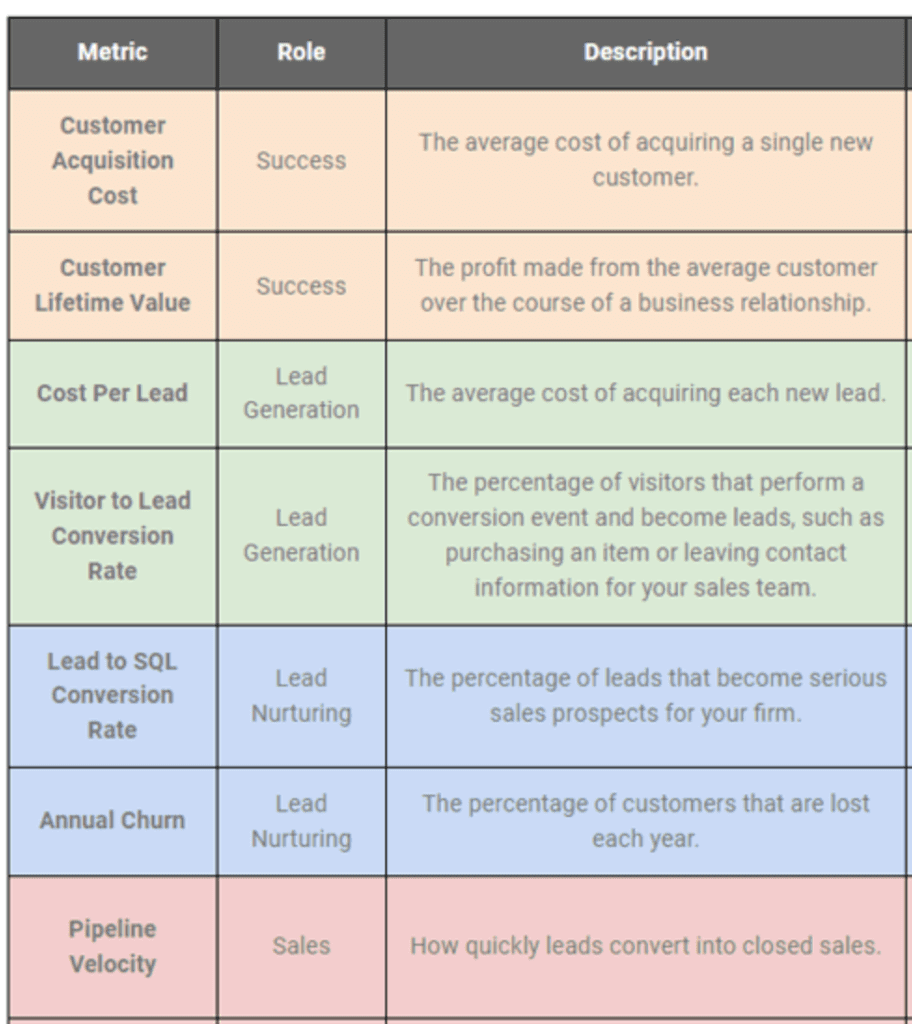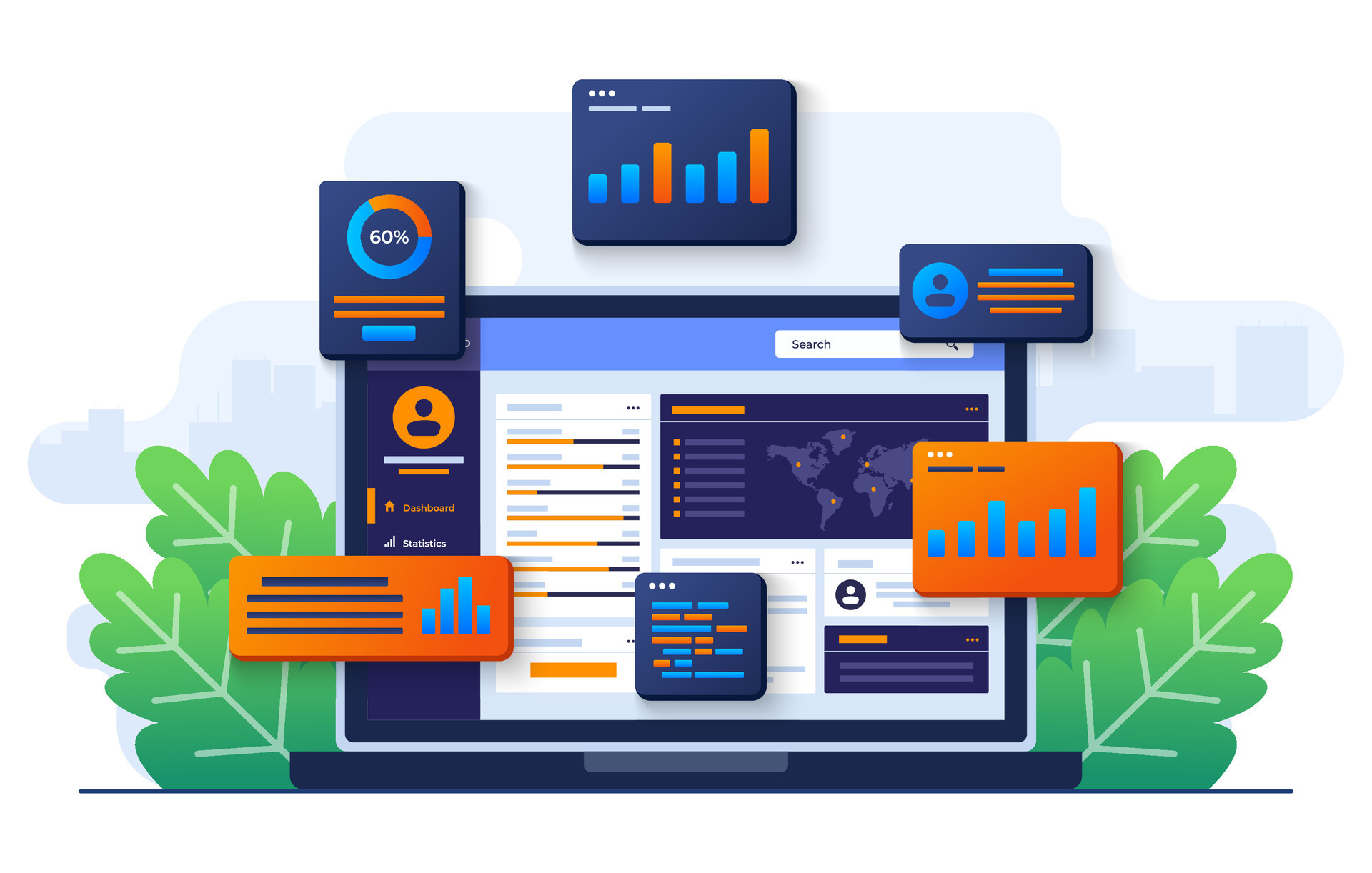Guide to Mastering Content Strategy ROI: Why It Matters and How to Track your Campaign Performace (Part 1)
WHAT IS INSIDE THIS ARTICLE
Click here to learn more
The Burning Question: Is Your Content Marketing Paying Off?
As a content marketer (or digital strategist), you’ve poured countless hours into crafting compelling stories, creating visually stunning assets, and developing a strategic content plan. But amidst the whirlwind of content creation, a nagging question lingers: Is all this effort truly paying off?
You’re not alone in this struggle. According to a recent survey by Reaction Power, a staggering 60% of marketers grapple with quantifying the return on investment (ROI) from their content marketing initiatives.
The harsh reality is that without a clear understanding of your content marketing ROI, you’re essentially operating in the dark, unable to justify your investments, optimize your strategy, or align your efforts with your organization’s overarching goals.
But fear not, fellow content crusader! We are starting on a journey to take a stab or many, to a broad topic of content marketing ROI, to recommend tools to measure, analyze, and maximize the impact of your content efforts.
Keep posted because this will be a series!
2. Measuring ROI for Content Marketing
What is Content Marketing ROI? A Simple Definition
At its core, content marketing ROI ) is a metric that measures the financial return generated by your content marketing efforts in relation to the costs incurred. It quantifies the value and effectiveness of your content strategy by evaluating its impact on key business objectives, such as lead generation, customer acquisition, and revenue growth.
Simply put, Content Marketing ROI helps you determine whether your content is generating a positive return on investment or not.
While the concept may seem straightforward, calculating an accurate content marketing ROI can be a complex task, as it involves tracking various metrics, attributing revenue to specific content pieces, and accounting for indirect benefits like brand awareness and customer loyalty.
Why Measuring Content Marketing ROI is a Game-Changer
Measuring your content marketing ROI is not just a nice-to-have; it’s a game-changer that can revolutionize the way you approach content marketing. Here’s why:
- Justify Investments: By quantifying the financial returns, you can demonstrate the value of your content marketing efforts to stakeholders and secure continued support and budget allocation.
- Optimize Strategy: ROI analysis provides insights into what’s working and what’s not, allowing you to refine your content strategy, reallocate resources, and maximize returns.
- Align with Business Goals: Tracking ROI ensures that your content marketing efforts are aligned with your organization’s overall objectives, whether it’s increasing sales, generating leads, or improving customer retention.
- Data-Driven Decision Making: ROI measurement or ROI data empowers you to make informed decisions about your content investments, rather than relying on gut feelings or assumptions for better resource allocation, and strategic direction.
By understanding your content marketing ROI, you can make informed decisions about resource allocation, content optimization, and overall strategy alignment.

Content Marketing ROI Formula
Related Article : Data-Driven Luxury Strategy & its Customer Experience
Proving Value to Product and Leadership Teams
One of the biggest challenges content marketers face is proving the value of their efforts to product teams and leadership. After all, content marketing is often seen as a supporting function rather than a revenue-generating engine.
So in a report by Minuttia, it is confirmed we are not alone, 53% of organizations said their content efforts weren’t tied to their organization’s revenue in 2023.
By measuring and communicating the ROI of your content marketing initiatives, you can demonstrate how your efforts directly contribute to product adoption, customer retention, and ultimately, revenue growth.
Content ROI Example
Hubspot, a marketing and sales software company, created content to generate high-quality leads that generated a 28% increase in product trials (free trial signups) compared to the previous year, increasing the conversion rate by 30% compared to the leads coming from other channels. These leads, also had higher customer lifetime value, demonstrating the long-term impact of content marketing.
Content Marketing ROI vs. Traditional Marketing ROI
It’s important to note that measuring the ROI of content marketing differs from traditional marketing ROI calculations. Unlike paid advertising or direct mail campaigns, where the costs and conversions are more easily tracked, it involves a longer buyer’s journey and multiple touchpoints.
Content ROI takes into account factors such as:
- Organic Traffic: The value of organic search traffic driven by your content.
- Lead Nurturing: The role of content in nurturing leads and moving them through the sales funnel.
- Brand Equity: The long-term impact of content on building brand awareness, trust, and loyalty.
- Customer Retention: The ability of content to educate, engage, and retain existing customers.
While traditional marketing ROI focuses on short-term, direct conversions, content ROI encompasses a broader range of metrics and long-term benefits, making it more challenging to measure but also more valuable in the long run.
Content Marketing ROI Strategy Differences
As we mentioned, it is a long-term strategy that has its advantages and disadvantages, so a comprehensive approach that accounts for these differences and captures the true value of your content strategy is key.
The outcome for a Content Marketing Strategy yes, it is long-term but the quality and the lifetime value that can bring may outweigh short-term approaches.
- Attribution Complexity: In traditional marketing, it’s often easier to attribute specific campaigns or tactics to conversions or sales. With content marketing, the attribution process is more complex, as content can influence customers at various stages of the buyer’s journey.
- Long-Term Impact: Content marketing often has a longer-term impact on brand awareness, thought leadership, and customer loyalty. Measuring the ROI solely based on short-term metrics may not capture the full value of content marketing efforts.
- Qualitative Benefits: Content marketing can provide qualitative benefits, such as improved customer experience, increased brand affinity, and better search engine visibility, which can be challenging to quantify in financial terms.
- Multichannel Distribution: Content is often distributed across multiple channels, making it difficult to isolate the impact of individual pieces or campaigns.
- Compounding Returns: High-quality content can continue to generate value over time, leading to compounding returns that may not be immediately apparent in short-term ROI calculations.
This is why we play the game, the Content Strategy Game
| Metric | Content Marketing ROI (CMROI) | Traditional Marketing ROI |
| Cost-Effectiveness | CMROI is more cost-effective, with 62% lower costs compared to traditional marketing (Neil Pattel) | Traditional marketing methods often require significant investment in production, media placement, and distribution (Tempesta) |
| Lead Generation | CMROI generates over 3x times as many leads as traditional marketing (Neil Pattel) | – |
| Conversion Rates | CMROI has a conversion rate nearly 6x times higher than other digital marketing methods | – |
| Long-Term Impact | CMROI leaders experience 7.8x higher year-over-year growth in unique site traffic compared to followers | The impact of traditional marketing is often short-lived, with limited shelf life |
| Measurability | CMROI ROI encompasses organic traffic, lead nurturing, brand equity, and customer retention (Parse.ly) | Traditional marketing ROI focuses on short-term, direct conversions4 |
| Flexibility | CMROI offers the flexibility to create and modify content as needed to align with audience preferences and market trends | Traditional marketing has limited versatility in adapting to changing market conditions |
| Analytics | CMROI provides actionable insights through analytics tools that track engagement metrics like website traffic, click-through rates, and conversion rates | – |
3. Tracking the Right Metrics: The Key to Unlocking Content Marketing ROI
Before diving into the nitty-gritty of calculating your content marketing ROI, it’s essential to understand the key metrics that contribute to this calculation. These metrics not only provide insights into the performance of your content but also serve as the building blocks for your ROI analysis.
Engagement Metrics: The Foundation of Your Content Strategy
Engagement metrics are the foundation of your content marketing efforts. They provide a glimpse into how your audience is interacting with your content and can serve as early indicators of success or areas for improvement.
Some of the key engagement metrics to track include:
- Website Traffic: The number of visitors to your website, broken down by source, blog, or content channels, broken down by source (organic search, social media, referrals, etc.).
- Time on Page/Session Duration: The average time visitors spend on your content pages, indicating their level of engagement, this can indicate the quality and relevance of your content.
- Bounce Rate: Track the percentage of visitors who leave your website after viewing only one page, which can help identify content that may not be meeting audience expectations (content quality issues).
- Social Media Engagement: Monitors metrics such as likes, shares, comments, and mentions on social media platforms to gauge audience engagement, potential reach, and content shareability.
While engagement metrics don’t directly translate to revenue, they provide valuable insights into the effectiveness of your content in capturing and retaining your audience’s attention, which is a crucial first step in the buyer’s journey.
INSIGHT: Some times Social Media Engament is called ‘vanity metrics’ due to a bit of ‘abstraction’ and the complexity of their sources, but based on our experience always plan to measure something in your content.
Lead Generation and Conversion: The Ultimate Goal
As your audience progresses through the buyer’s journey, lead generation and conversion metrics become increasingly important. These metrics help you understand how effectively your content is driving desired actions, such as form submissions, trial signups, or purchases.
Key lead generation and conversion metrics to track include:
- Lead Generation: The number of new leads captured through content-driven channels, such as gated assets or landing pages.
- Conversion Rates: The percentage of visitors who take desired actions, such as making a purchase, requesting a demo, or signing up for a trial, form submissions, email subscriptions, or content downloads, after engaging with your content.
- Cost per Lead/Acquisition (CPL): The average cost of acquiring a lead or customer through your content marketing efforts, which can help evaluate the efficiency of your campaigns.
- Marketing Qualified Leads (MQLs): The number of leads that meet specific criteria and are deemed ready for further nurturing by your sales team.

Identify which content pieces are most effective in driving conversions and optimize your strategy accordingly.
Revenue and Customer Acquisition: The Bottom Line
Ultimately, the content’s goal is to drive revenue and acquire new customers. Therefore, tracking revenue and customer acquisition metrics is crucial for ROI.
Key revenue and customer acquisition metrics to track include:
- Sales Revenue / Revenue Attribution: The total revenue generated from sales that can be attributed to your content.
- Customer Acquisition Cost (CAC): The average cost incurred to acquire a new customer through your content initiatives (it helps to evaluate ROI).
- Customer Lifetime Value (CLV) /Lifetime Value (LTV): The projected revenue a customer will generate over the course of their relationship with your business.
- Customer Retention Rate: The percentage of customers who continue to do business with you over a specific period.

Example of metrics that connect the Content Strategy to tangible business outcomes and calculate the financial return on your investments.
Setting Up a Comprehensive Tracking System
To accurately measure your content ROI, it’s essential to have a comprehensive tracking system in place. This involves integrating various tools and platforms to capture data from multiple sources, such as your website, marketing automation software, customer relationship management (CRM) system, and analytics platforms.
Some popular tools and platforms for tracking include:
- Google Analytics: A free web analytics service that provides valuable insights into website traffic, user behavior, and conversion data.
- Marketing Automation Platforms: Tools like HubSpot, Marketo, or Pardot that track lead generation, nurturing, and conversion activities.
- CRM Systems: Customer relationship management software like Salesforce or Zoho CRM that stores customer data and sales information.
- Content Management Systems (CMS): Platforms like WordPress or Drupal that can integrate with analytics tools to track content performance.
Tracking Setup: Ensure proper data tracking and attribution to accurately measure the impact across the customer journey, from awareness to conversion and retention.
Content Marketing KPIs for SaaS, Services, and Product Companies
While the core metrics for measuring content are universal, the specific key performance indicators (KPIs) you track may vary depending on the nature of your business. For SaaS, services, and product companies, some additional KPIs to consider include:
- Product Usage and Adoption: Metrics that track how your content influences product usage, feature adoption, and overall engagement with your offering.
- Customer Retention and Churn: Measuring the impact of your content on retaining existing customers and reducing churn rates.
- Upsell and Cross-sell Opportunities: Tracking how your content contributes to identifying and capitalizing on opportunities for upselling or cross-selling additional products or services.
- Customer Support Efficiency: Analyzing how your content affects the volume and resolution time of customer support inquiries.
How to Measure Content Performance
By starting to understand the key metrics and KPIs that contribute to your content marketing ROI and tailoring those metrics to your specific business model, and by identifying deeper insights that impact your core offerings to drive tangible business outcomes. You’ve taken the first step towards maximizing your content efforts.
Clear on what you want to do, but not clear how to start? Let’s chat about how you can start with the best strategy.
In the next article of this series, we’ll dive into the nitty-gritty of calculating your Marketing ROI, exploring various formulas, tools, and real-world case studies.
Stay tuned, and get ready to take your Marketing ROI to new heights!































